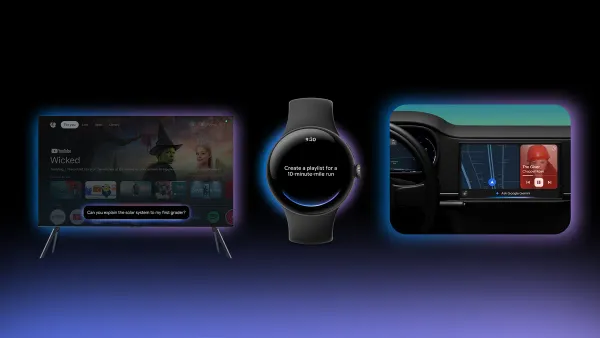Thursday🌪️AI Buzz: Adobe's New Tools, Mistral's Optimized Models, and the Future of Human-Level AI
1/ Adobe unveils tools to create 3D scenes, animate text & erase distractions
2/ Mistral drops AI models optimized for laptops & phones
3/ Meta AI leader: 'World Models' could unlock human-level AI—within 10 years
4/ US Weather Agency taps AI for sharper, faster hurricane forecasts
Check out below for deeper insights!✨
Happy Thursday, tech enthusiasts! Today, we're diving into the latest AI Buzz that's shaping the future of technology. From Adobe's groundbreaking tools that enable creators to design stunning 3D scenes and animations to Mistral's new AI models optimized for laptops and smartphones, innovation is in the air. We’ll also explore insights from Meta’s AI leader on how "World Models" could pave the way for human-level AI within the next decade. Plus, find out how the U.S. Weather Agency is leveraging AI to enhance hurricane forecasts. Let’s explore these exciting developments!
1/ Adobe unveils tools to create 3D scenes, animate text & erase distractions
Adobe is previewing experimental AI tools designed to streamline creative workflows and give users more control over content creation. Project Scenic allows users to build 3D scenes by adding, moving, and resizing objects, generating 2D images based on the 3D setup. Project Motion simplifies animation, letting users create motion effects and enhance videos with text prompts. Meanwhile, Clean Machine removes distractions from photos and videos, correcting overexposure or visual disruptions automatically. Announced at Adobe MAX as “Sneaks,” these tools showcase emerging technology that could soon be integrated into Creative Cloud apps, empowering creatives with faster and smarter editing capabilities.
/cdn.vox-cdn.com/uploads/chorus_asset/file/25679583/Screenshot_2024_10_15_at_16.11.59.png)
2/ Mistral drops AI models optimized for laptops & phones
French AI startup Mistral has unveiled Les Ministraux, a new line of lightweight AI models designed for edge devices like laptops and smartphones. The 3B and 8B models offer fast, privacy-focused solutions for tasks such as on-device translation, smart assistants, and autonomous robotics. With a 128,000-token context window, these models can handle the equivalent of a 50-page book. Available for cloud use or self-deployment, the 8B model is now open for research access. As part of a growing trend towards smaller, efficient AI models, Mistral aims to rival giants like OpenAI’s GPT-4 with high performance and real-world applications.

3/ Meta AI leader: 'World Models' could unlock human-level AI—within 10 years
Yann LeCun, Meta’s chief AI scientist, argues that true “human-level AI” could take a decade, emphasizing the need for advanced "world models." Unlike current AI, which predicts text or pixels, world models would allow AI to understand, plan, and reason in a 3D environment—similar to how humans process the world. LeCun explains that AI systems need memory, intuition, and common sense to perform complex tasks reliably. While multiple labs, including Meta’s FAIR, are pursuing world models, LeCun admits there are still significant challenges ahead. Progress may take years, but the potential impact could reshape the future of AI.

4/ US Weather Agency taps AI for sharper, faster hurricane forecasts
The U.S. National Oceanic and Atmospheric Administration (NOAA) is enhancing weather predictions by incorporating AI and neural networks. As climate change intensifies storms, accurate forecasts become crucial. NOAA's National Weather Service is now utilizing a neural network model to analyze hurricane intensity changes. The agency is also improving alert speed and accuracy through translations in multiple languages, addressing communities that speak Spanish, Chinese, Vietnamese, Samoan, and French. While generative AI is still in research stages, NOAA is using machine learning to combat misinformation about storms and recovery efforts, ensuring communities receive reliable information quickly.

As we wrap up today’s exploration of the latest advancements in AI, it’s clear that innovation is progressing at a breathtaking pace. From Adobe's powerful new tools enhancing creativity to Mistral's cutting-edge AI models that make smart technology accessible on our devices, the future looks promising. Meta’s vision of "World Models" could bring us closer to achieving human-level AI, while the U.S. Weather Agency’s use of AI for more accurate hurricane forecasting demonstrates how technology can safeguard our communities. Stay tuned for more updates as we continue to navigate this dynamic landscape of artificial intelligence!









